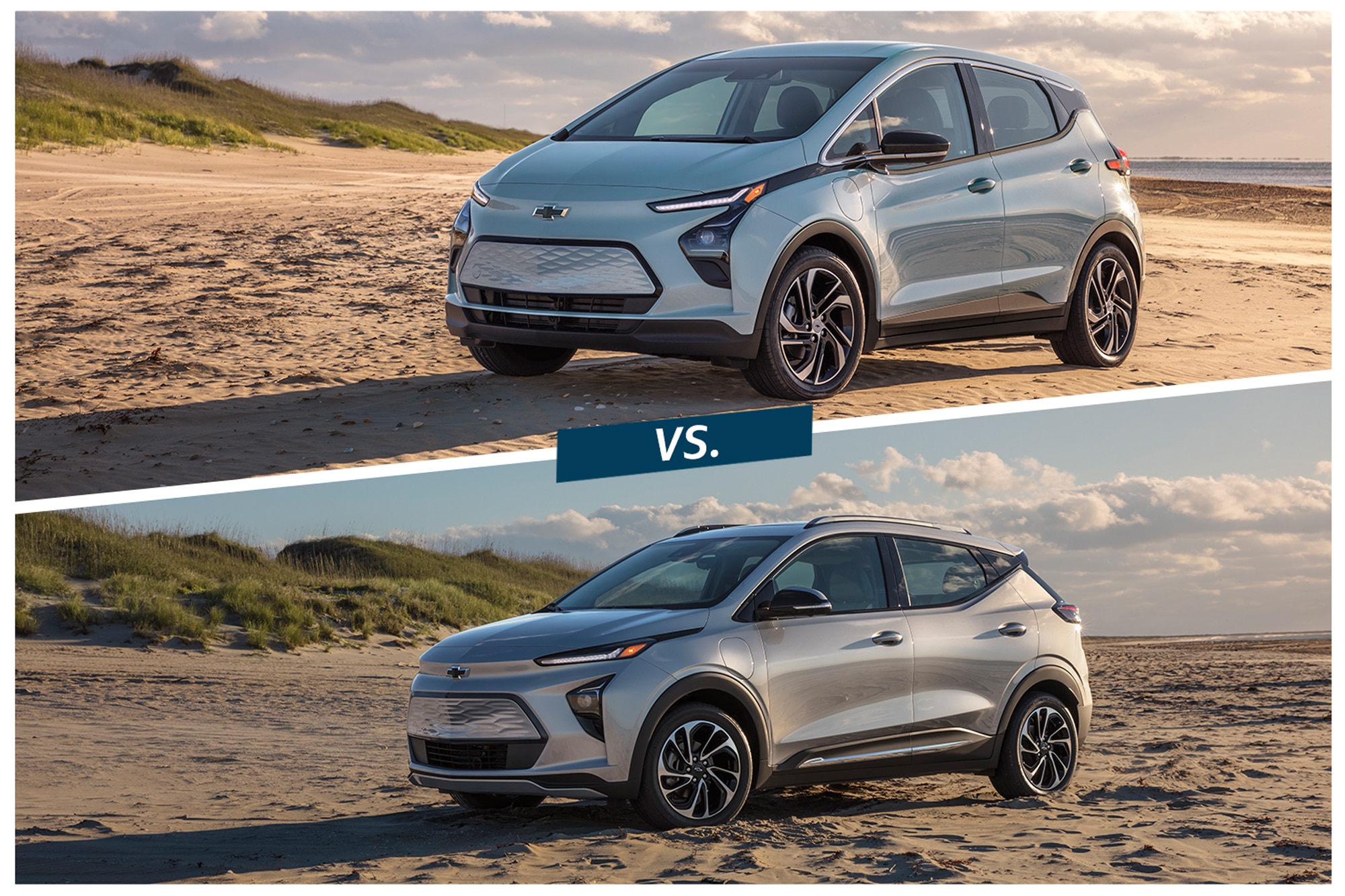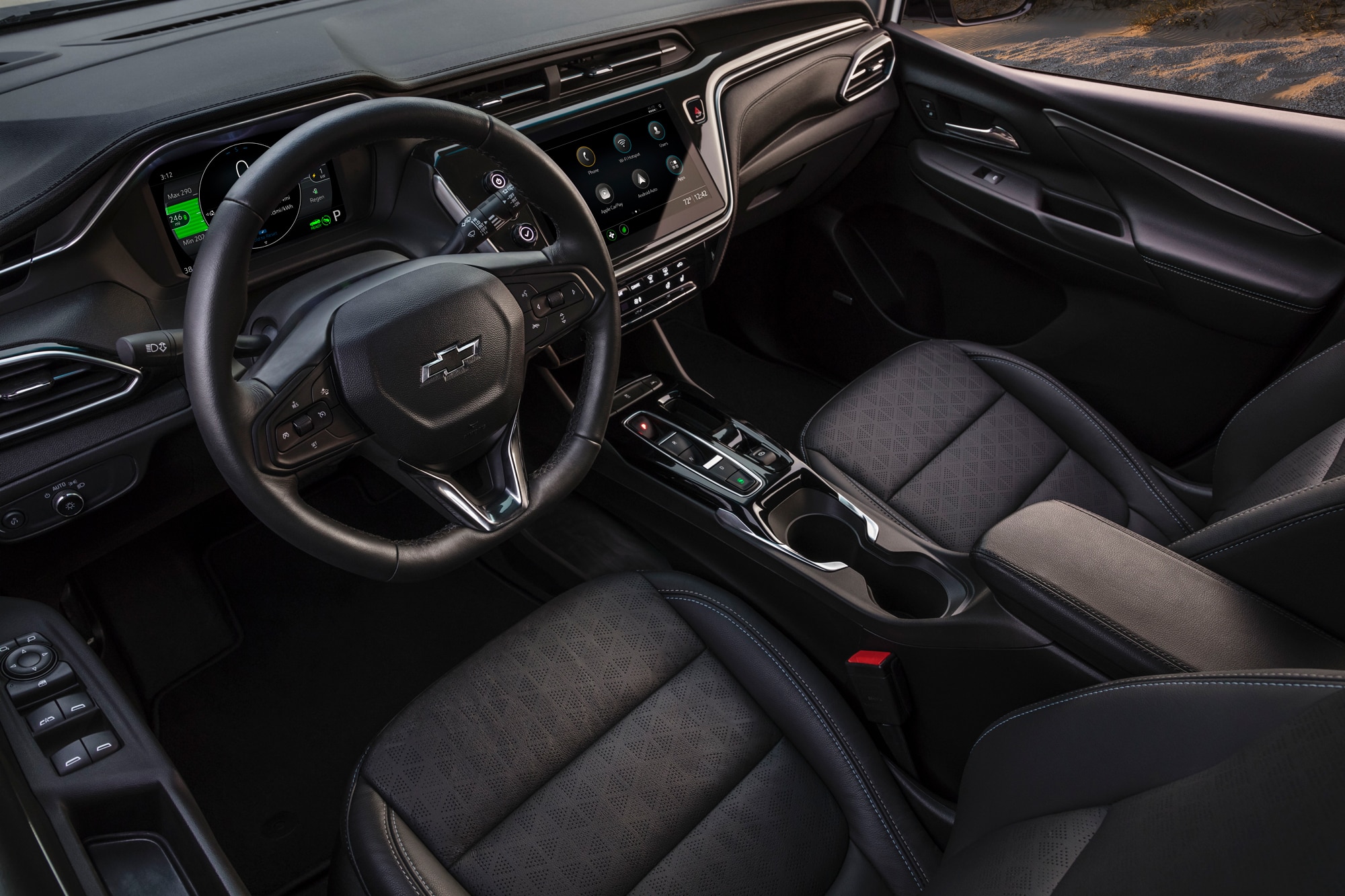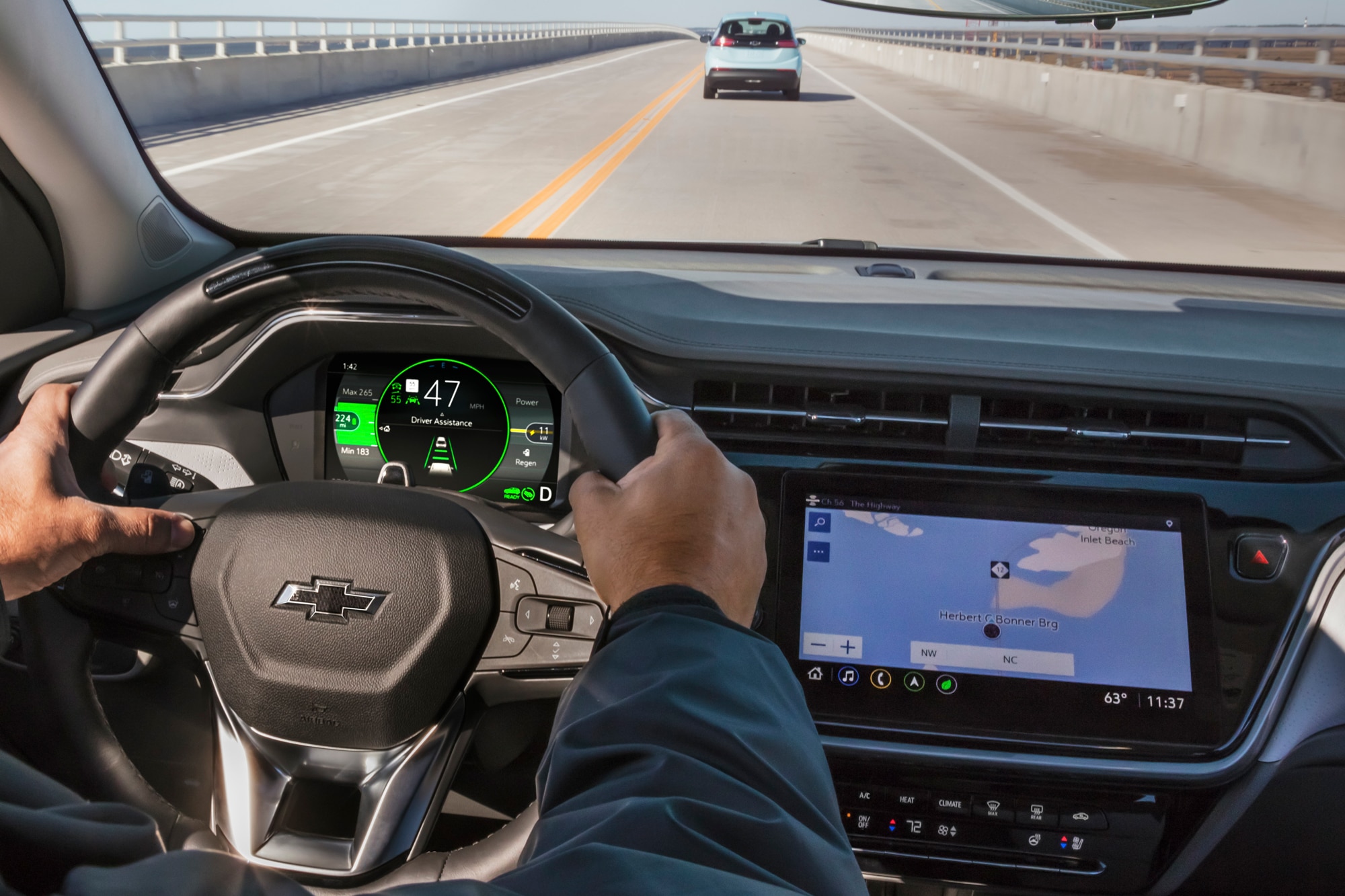Compared: 2022 Chevrolet Bolt EV vs. 2022 Chevrolet Bolt EUV
As the newer and larger subcompact electric crossover, the Bolt EUV offers a little more than the EV.
 Chevrolet
Chevrolet
As you'll see below, not a lot differentiates Chevrolet’s electric Bolts. In fact, for many buyers, it may just come down to shape. If you're interested in a conventional crossover body, we'd suggest the Bolt EUV. Want more of a doorstop-looking thing? The slightly smaller Bolt EV is your pick. Here’s a rundown of how else they differ.
Chevrolet Bolt EV vs. Chevrolet Bolt EUV: Price
The Bolt EV starts at around $32,000, or $2,000 less than the 6.3 inch longer, $34,000 Bolt EUV. And there’s no government-subsidized incentive to take into account here: Chevy’s parent company, GM, has sold well over 200,000 EVs by this point, so neither vehicle is eligible for the $7,500 federal tax credit.
For the EV, shoppers can select either the base 1LT trim level or the better-equipped 2LT for $3,200 more. The latter comes with driver-assistance technologies like a surround-view camera, blind-spot monitoring, rear cross-traffic monitoring, rear parking assist, a heated steering wheel, an eight-way power-adjustable driver’s seat, leather-trimmed upholstery, and heated seats up front. The uplevel Premier trim for the EUV—which costs $4,500 more than the entry LT—adds the same stuff, plus standard adaptive cruise control.
If you're willing to wait a few months, you can snag a 2023 Bolt EV or EUV for a lot less than the 2022 models. Chevrolet has announced that the base price of the 2023 EV will be around $26,600 while the 2023 EUV will start around $28,000.
 Chevrolet | Bolt EV
Chevrolet | Bolt EV
Chevrolet Bolt EV vs. Chevrolet Bolt EUV: Interior
All models have Chevy Safety Assist, a technology suite that includes automatic emergency braking, lane keeping, lane-departure warning, forward-collision alert, and automatic high-beams. As mentioned above, the higher trims provide more creature comforts than the lower ones, but the EUV offers some content that you won’t find in the EV, such as wireless phone charging, ventilated front seats, heated rear seats, a camera rearview mirror, and GM’s hands-free Super Cruise highway assistance.
As for interior space, the two subcompact crossovers are about the same. The EV offers 94 cu.-ft. of passenger volume, three cubes less than what the EUV has. The smaller Bolt EV beats its sibling by one cubic foot in cargo capacity behind the rear seat, though, 17 to 16.
 Chevrolet | Bolt EUV
Chevrolet | Bolt EUV
Chevrolet Bolt EV vs. Chevrolet Bolt EUV: Range
Both Bolts use the same 65 kWh battery pack and 200 hp electric motor, but the smaller model has an advantage—however marginal—in efficiency. It boasts 259 miles of range and 120 MPGe on the EPA’s combined cycle, which is 12 miles and 5 MPGe better than the EUV.
On a 120V outlet, each model should add four miles of range per hour. But when it comes to Level 2 and 3 charging, the EV restores electrons a little quicker than the EUV: It replenishes 39 miles of range per hour when connected to a 240V plug, whereas the EUV adds up to 37. On a DC fast-charger, the Bolt EV gains 100 miles of range in a half-hour, and the EUV, 95.
Written by humans.
Edited by humans.
 Austin Lindberg
Austin LindbergAustin Lindberg has spent the past 15 years working in journalism as a reporter and an editor covering the automotive industry, motorsports, and soccer for publications in the U.S. and the U.K. He is an EV owner with a keen interest in electrification and green tech.
Related articles
View more related articles